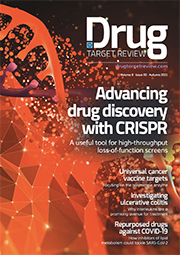The value of automating assays in screening
Posted: 2 May 2018 | Giulia Pasini, Sheraz Gul (Fraunhofer-IME SP) | No comments yet
This article compares and contrasts a commonly used cell viability assay in manual and automated fashion and provides exemplar data from each scenario.


THE SCREENING of biological assays against compound libraries in a high-throughput fashion is a widely employed methodology to identify chemical starting points in drug discovery. A pre-requisite for this exercise is the need for a suitable assay and an appropriate compound library. In most cases, the assays are usually in a miniaturised format in microtiter plates. Such screening activities can be labour intensive, involving highly repetitive tasks that are prone to errors.
The automation of processes is the highest in the food services, manufacturing, agriculture, transportation, retail trade and mining industries, and has been proven to improve performance, quality and speed while reducing errors.1 Automation has also been implemented in drug discovery, most notably in the pre-clinical area of high-throughput screening (HTS).2,3 This has made possible the screening of numerous drug discovery target assays against compound libraries composed of many millions of individual chemical entities4-7 and has enriched the pipelines of many pharmaceutical companies.8
It is essential that reliable, robust and well-conceived workflows are implemented when considering automation solutions for screening activities. These need to be flexible, as diverse types of assays are being employed in drug discovery. As automation is costly, one way to reduce its overall cost is to miniaturise assays. Consequently, in order to maintain a low solvent concentration in assays (as compounds are stored in DMSO), nL volumes of a compound will need to be dispensed and this necessitates the use of expensive technologies such as acoustic dispensing.9
Automating cell-based assays
We compare and contrast the value of automation using the Promega CellTiter-Glo Luminescent Cell Viability Assay as an example. This assay determines the number of viable cells in a homogeneous method based on quantifying intracellular ATP, which is an indicator of metabolically active cells. The assay is one of the simplest cell-based assays that can be performed in which a wide range of cell types are exposed to compounds in microtiter plates for a specific period of time, after which their viability can be determined following the addition of the CellTiter-Glo reagent.
This type of assay is an essential component of all small molecule drug discovery projects, as it is necessary to determine their cytotoxic selectivity index and its precise values will depend on the disease for which compounds are being developed. For example, by their nature, anticancer compounds are associated with a greater extent of cytotoxicity against non-cancerous cells, which often leads to their side effect profiles. This contrasts with compounds that may need to be taken for non-life-threatening chronic diseases, where much lower cytotoxicity is required.
In order to demonstrate the value of automating assays, a number of screening datasets in 384-well microtiter plates have been generated for the Luminescent Cell Viability Assay using the A549 (human epithelial lung carcinoma) cell-line. Assay-ready microtiter plates were prepared using the Labcyte Echo acoustic dispenser with the cells and CellTiter-Glo reagent being added manually or in an automated manner using the Multidrop peristaltic reagent dispenser. This device can deliver a wide range of solutions into 96/384/1,536 well microtiter plates in the sub-μL to multi-μL volumes in an efficient manner. It is suitable for dispensing cells, works at high speed and is easy to set up with quick plate and volume selection. The device uses an autoclavable eight-channel detachable, dispensing cassette that ensures sterile conditions and avoids cross-contamination.
Improving data quality with automation
We have performed a small-scale study that illustrates the value of automating the addition of reagents for the A549 cell viability assay. The assays made use of a series of microtiter plates into which reagents were dispensed manually using a 16-channel pipette or a Thermo Multidrop, each dispensing 20μL of cells per well. Following a 24hr incubation at 37°C in the presence of 5% CO2, cell viability was determined following the addition of 10μL of Cell TiterGlo reagent (dispensed in a manual or automated manner). See Table 1 for assay protocols.
The results in Figure 1 show typical datasets for manual (Figures 1A and 1B) and automated (Figures1C) dispensing of reagents for the cell viability assay. Although considerable care was taken when performing the cell viability manually, dispense errors occurred which led to the higher than expected deviations in the observed signals in these microtiter plates yielding CV values in the region of 15%. In marked contrast, automating the dispensing of the two key reagents using the Multidrop led to a significant reduction in the variability in the signal across the plate, resulting in the CV decreasing to around 8%. This is a substantial improvement in assay performance and in a real screening campaign in which appropriate high and low controls would also be used, this would be expected to deliver a Z’ >0.7, which is acceptable for progressing all assays to a screening campaign.
How much automation should be implemented
The types of screening activities being performed in pre-clinical drug discovery to identify chemical starting points for drugs includes target-based assays that use proteins in isolation and phenotypic assays, which are cell-based and often involve high-content imaging. In order to be able to assess which compounds identified from screening activities are suitable for progression in the drug discovery pipeline, their selectivity and liability profiles need to be taken into account. The target-based assays are easier to automate, in contrast to cell-based phenotypic assays which are often complex in nature.
As fully automated screening systems are expensive, an alternative cheaper option suitable for low to medium throughput screening is to use a liquid handler with a microtiter plate stacker. The stacker will enable a large number of microtiter plates to be filled with no user intervention. Once this step is complete, the entire stacker can be manually retrieved and moved to the next step in the process. This type of automation system can also offer greater versatility and be upgraded with minimal disruption.
The ultimate choice of automation should take into account the return on investment and consider factors such as the need to train staff and ongoing maintenance contracts. It is therefore essential to look at each of these aspects in detail with a potential supplier prior to making any purchase. Any oversight may well result in the adoption of laboratory automation that fails to deliver as expected.
References
1. Jobs lost, jobs gained: Workforce transitions in a time of automation. McKinsey Global Institute, December 2017.
2. Michael S, Auld D, Klumpp C, Jadhav A, Zheng W, Thorne N, Austin CP, Inglese J, Simeonov A. A robotic platform for quantitative high-throughput screening. Assay Drug Dev Technol. 2008;6:637-57.
3. Gaisford W. Robotic liquid handling and automation in epigenetics. J Lab Autom. 2012;17:327-9.
4. Mordwinkin NM, Burridge PW, Wu JC. A review of human pluripotent stem cell-derived cardiomyocytes for high-throughput drug discovery, cardiotoxicity screening, and publication standards. J Cardiovasc Transl Res. 2013;6:22-30.
5. Rodrigues AD. Preclinical drug metabolism in the age of high-throughput screening: an industrial perspective. Pharm Res. 1997;14:1504-10.
6. Janzen WP, Popa-Burke IG. Advances in improving the quality and flexibility of compound management. J Biomol Screen. 2009;14:444-51.
7. Martins SA, Trabuco JR, Monteiro GA, Chu V, Conde JP, Prazeres DM. Towards the miniaturization of GPCR-based live-cell screening assays. Trends Biotechnol. 2012;30:566-74.
8. Macarron R, Banks MN, Bojanic D, Burns DJ, Cirovic DA, Garyantes T, Green DV, Hertzberg RP, Janzen WP, Paslay JW, Schopfer U, Sittampalam GS. Impact of high-throughput screening in biomedical research. Nat Rev Drug Discov. 2011;10:188-95.
9. Hadimioglu B, Stearns R, Ellson R. Moving Liquids with Sound: The Physics of Acoustic Droplet Ejection for Robust Laboratory Automation in Life Sciences. J Lab Autom. 2016;21:4-18.
Biography




The rest of this content is restricted - login or subscribe free to access


Why subscribe? Join our growing community of thousands of industry professionals and gain access to:
- quarterly issues in print and/or digital format
- case studies, whitepapers, webinars and industry-leading content
- breaking news and features
- our extensive online archive of thousands of articles and years of past issues
- ...And it's all free!
Click here to Subscribe today Login here
Related topics
Assays, Lab Automation
Related organisations
Fraunhofer-IME SP, University of Modena and Reggio Emilia
Related people
Giulia Pasini, Sheraz Gul



